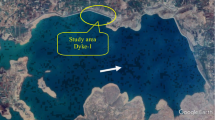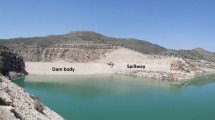Summary
The Keban Dam was completed in 1974 on the Euphrates River in the eastern part of Turkey. The main dam of rock fill and concrete gravity structures rests on a karstic marble and limestone. The so-called ”Crab Cavity”, which was found during the construction in 1971, is the largest cavity encountered in the foundation of Keban Dam, on the left abutment and about 320 metres below the crest level. The volume of the cavity was estimated to be about 104 000 cubic metres. The cavity was plugged by using approximately 63 400 cubic metres of tremie concrete, slurry and neat grout, which plugged the downstream half part of it.
Résumé
En 1974 fut achevé le barrage de Keban, sur l’Euphrate, en Turquie orientale. Il s’agit d’un barrage poids, en enrochements et en béton reposant sur des marbres et calcaires karstiques. Au cours de la construction des fondations, en 1971, furent découvertes plusieurs cavités dont la principale, dénommée «la Grotte aux Crabes» était située sous la culée de gauche, à 320 m environ sous le niveau de la créte. Son volume fut évalué à 104 000 m3 environ et il fallut employer environ 63 400 m3 de béton, de coulis et de ciment pur, pour en obstruer la moitié aval.
Similar content being viewed by others
Author information
Authors and Affiliations
Rights and permissions
About this article
Cite this article
Özbek, E. Cavity at Keban Dam, Turkey. Bulletin of the International Association of Engineering Geology 12, 45–48 (1975). https://doi.org/10.1007/BF02635427
Published:
Issue Date:
DOI: https://doi.org/10.1007/BF02635427




